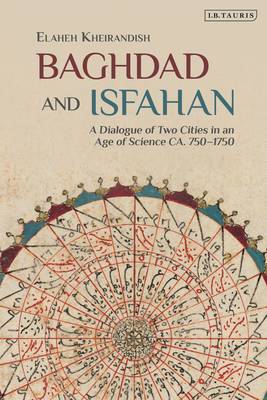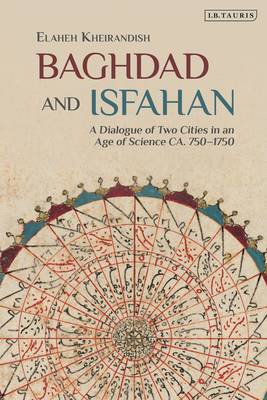
Je cadeautjes zeker op tijd in huis hebben voor de feestdagen? Kom langs in onze winkels en vind het perfecte geschenk!
- Afhalen na 1 uur in een winkel met voorraad
- Gratis thuislevering in België vanaf € 30
- Ruim aanbod met 7 miljoen producten
Je cadeautjes zeker op tijd in huis hebben voor de feestdagen? Kom langs in onze winkels en vind het perfecte geschenk!
- Afhalen na 1 uur in een winkel met voorraad
- Gratis thuislevering in België vanaf € 30
- Ruim aanbod met 7 miljoen producten
Zoeken
Baghdad and Isfahan
A Dialogue of Two Cities in an Age of Science CA. 750-1750
Elaheh Kheirandish
Paperback | Engels
€ 67,95
+ 135 punten
Uitvoering
Omschrijving
Renowned as great centres of learning, the cities of Baghdad and Isfahan were at
the heart of the Islamic civilization as rich capital cities and centres of intellectual
thought. Their distinct cultural voices inspired a unique historical dialogue, which
finds new expression in Baghdad and Isfahan, the story of how knowledge was
transmitted and transformed within Islamic lands, and then spread across Europe.
Capturing the history of Baghdad and Isfahan from 750 to 1750, Elaheh Kheirandish
draws on the voices of court astronomers, mathematicians, scientists, mystics,
jurists, statesmen and Arabic and Persian translators and scholars to document the
extensive and lasting contribution of sciences from Islamic lands to the history of
science. Kheirandish bases her narrative on a unique medieval manuscript and other
historical sources and the result is more than a thousand-year 'tale of two cities' - it
is a city by city, and century by century, look at what it took to change the world.
In a feat of travelogue and time travel, this unique book creates parallel stories
with modern and historical characters, crossing cities worldwide, and capturing
changes through time. Interweaving multiple narratives, histories, and futures, she
charts the possible paths - formalized and serendipitous, lost and recovered - by
which knowledge itself is translated and transmitted across time and cultures.
the heart of the Islamic civilization as rich capital cities and centres of intellectual
thought. Their distinct cultural voices inspired a unique historical dialogue, which
finds new expression in Baghdad and Isfahan, the story of how knowledge was
transmitted and transformed within Islamic lands, and then spread across Europe.
Capturing the history of Baghdad and Isfahan from 750 to 1750, Elaheh Kheirandish
draws on the voices of court astronomers, mathematicians, scientists, mystics,
jurists, statesmen and Arabic and Persian translators and scholars to document the
extensive and lasting contribution of sciences from Islamic lands to the history of
science. Kheirandish bases her narrative on a unique medieval manuscript and other
historical sources and the result is more than a thousand-year 'tale of two cities' - it
is a city by city, and century by century, look at what it took to change the world.
In a feat of travelogue and time travel, this unique book creates parallel stories
with modern and historical characters, crossing cities worldwide, and capturing
changes through time. Interweaving multiple narratives, histories, and futures, she
charts the possible paths - formalized and serendipitous, lost and recovered - by
which knowledge itself is translated and transmitted across time and cultures.
Specificaties
Betrokkenen
- Auteur(s):
- Uitgeverij:
Inhoud
- Aantal bladzijden:
- 296
- Taal:
- Engels
Eigenschappen
- Productcode (EAN):
- 9780755635108
- Verschijningsdatum:
- 28/12/2023
- Uitvoering:
- Paperback
- Formaat:
- Trade paperback (VS)
- Afmetingen:
- 156 mm x 234 mm
- Gewicht:
- 430 g

Alleen bij Standaard Boekhandel
+ 135 punten op je klantenkaart van Standaard Boekhandel
Beoordelingen
We publiceren alleen reviews die voldoen aan de voorwaarden voor reviews. Bekijk onze voorwaarden voor reviews.









